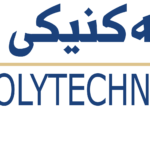- Zhyan Faeaq Hassan
- [email protected]
- 0750 395 9254
- 5.Final......Thesis
-
Plants are grown in commercial greenhouses to enhance their quality and protect them from the effects of the natural environment, such as cold, wind and rain. In temperate climes, energy is the highest overhead expense in the production of greenhouse production. Also, the cost of fossil fuels and other traditional energy forms continues to rise. A suitable heating system at a reasonable price is essential for heating the greenhouse to provide optimum indoor conditions throughout the colder months. Flat plate solar collectors (FPSC) are one of the most environmentally friendly and energy-efficient heating solutions. In this work, the thermal performance of the FPSC for the greenhouse heating system was experimentally and numerically investigated by firstly utilizing distilled water as a working fluid and secondly using Al2O3-water nanofluid with different nanoparticle concentrations of (0.2wt.%, 0.5wt.%, 1wt.%, and 1.5wt.%) with a mean diameter of 50 nm. The simulation model was conducted using TRNSYS 18. The outcome was validated with experimental results. All configurations were fully modeled in TRNSYS, and experimental tests evaluated the inputs of the model software. As a first step, the study estimates the maximum amount of energy needed, which was 12.8 kW on the coldest day of winter (12th January 2022) according to the Erbil’s weather data, for a greenhouse located in the Scientific Research Center in Erbil, Iraq. A temperature of 23ºC was selected as the set point temperature in the greenhouse, which is essential for the experiments needed to develop several plants. This investigation followed the ASHRAE standard. The most interesting finding was that when nanofluids were used as a working fluid, the efficiency gain was larger than using water only, even with a low concentration of nanoparticles. The experimental results illustrated that using Al2O3-water nanofluid at a concentration of 0.2wt.% increase the collector efficiency by 7.9% compared to water. Furthermore, the simulation results indicate that the maximum collector efficiency was attained, which was 83.6%, when 1wt.% nanofluid was used in the FPSC, which increased the collector efficiency by 26.1% over the water case. Any additional increase in the percentage of nanoparticles reduces collector efficiency. In summary, results show that during the coldest months of the year, the system could raise the inner air temperature of the greenhouse, which is ideal for farming applications and does not pollute the environment. It was also shown that utilizing nanofluid is a profitable working fluid that decreases the cost of heating system. Additionally, adding nanofluid to the system as HTFs could produce and store more energy, which in turn increase energy produced by about 22% over the case of using water only.
- Erbil Technical Engineering College
- Mechanical and Energy engineering
- Power


